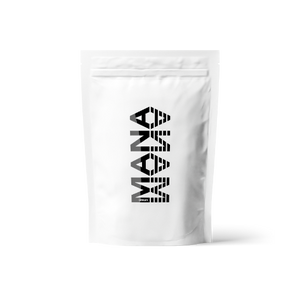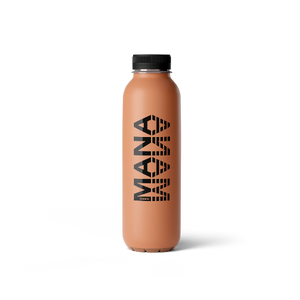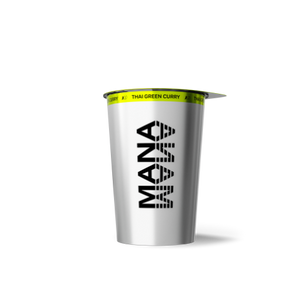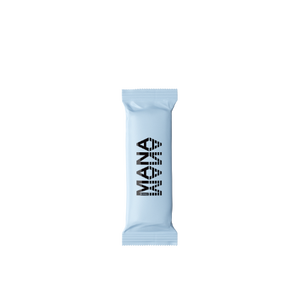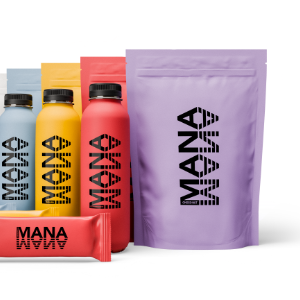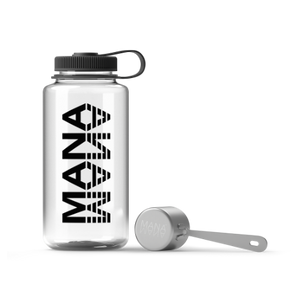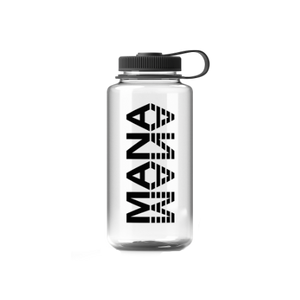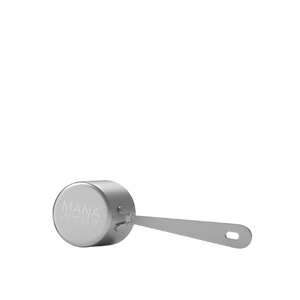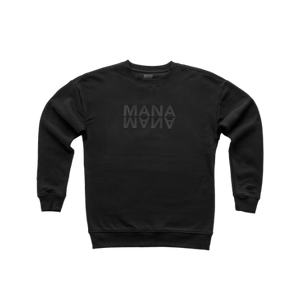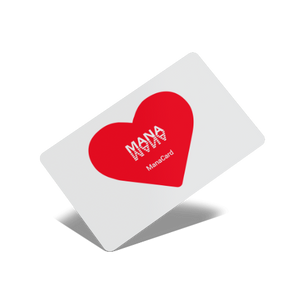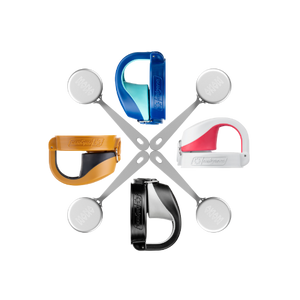
Since the beginning, one of Mana’s goals has been to promote health—both of people and the planet. This highest and most universal value guides not only our continuous perfection of Mana’s ingredients, but our sustainable methods of production, as well as what we communicate. We are constantly improving the clarity of our web pages, we regularly publish blogs about nutrition and popular science, and we always monitor the feedback from our customers on social media. We also believe that people should be informed when choosing what foods to eat. This is why, in the near future, you’ll be able to find an independent Nutri-Score on all our products. But what exactly is the Nutri-Score system? How can it help you make more informed food choices? And what does an A score actually mean?
The Nutri-Score system is a simple European nutrition and food labeling system based on the scientific method for determining nutritional value.
Products with green A and B scores have high nutritional value (high protein, fibre, fruit, vegetable, nut, canola oil, or olive oil content), and should be consumed often or in larger amounts.
Products with orange and red D and E scores, respectively, should be consumed less often or in smaller amounts because they contain undesirable nutrients such as saturated fat, sugar, and salt.
How are Nutri-Scores calculated?
Scoring is based on the amounts of individual nutrients (per 100 g or 100 ml) shown on the product label of a given food in accordance with legislation. The fewer the points, the better the score. For example, sugar, salt, and saturated fat will earn a food extra points. Likewise, points are deducted for the amounts of “positive” nutrients or ingredients, such as protein, fibre, fruits and veggies, nuts, etc.
This system, created by a team of French academics, is based on the Rayner Score, which was developed in 2005 at Oxford University (by a team led by Prof. Rayner) and approved by the British Food Standards Agency (FSA) in 2007. It has been validated by a number of expert studies.
All Mana products have a Nutri-Score of A
"From day one, we have believed that nutritionally complete and tasty foods from sustainable sources make sense in every way. They meet human nutritional needs, have far less impact on the planet than other foods, and help us live more effective lives. We are very pleased that these qualities have been confirmed by an independent authority. But no matter how well our products score according to any given system, we will never rest on our laurels. If an A + or A +++ score is possible, for example, we will achieve it,” says our co-founder and director of research and development, Marek Humpl.
According to the independent Nutri-Score system, ManaPowder, ManaDrink, and the ManaBurger have the highest possible score. For ManaDrink, we naturally calculated the Nutri-Score per 100 ml. Since ManaPowder should be mixed with water before consumption, it was logical to calculate it for 100 ml of prepared food (using the recommended proportions). For the ManaBurger, the score was calculated per 100 g of product.
In the new year, you will see our Nutri-Score everywhere
We are currently working on incorporating Nutri-Score labelling across all our communication channels and media. Naturally, we will start with our website. Then we’ll be updating our packaging.
The Nutri-Score rating system is widely used in Western Europe, and is recommended for use by the European Commission, as well as the World Health Organization.
Disadvantages of the Nutri-Score system
The Nutri-Score system is a simple way to help shoppers make more informed food choices, yet the price of simplicity is shortcomings, which are also worth knowing.
-
The Nutri-Score system does not account for the presence of vitamins and minerals. Nevertheless, it does account for the presence of generally beneficial ingredients, such as fruits, vegetables, nuts, and plant oils like olive oil and canola oil. These, of course, are sources of vitamins, minerals, and other phytonutrients. Foods with green ratings therefore have higher nutritional values, and are healthier and more important for the human diet. Mana contains all 14 essential vitamins and 17 essential minerals, as well as other essential nutrients such as omega-3s and omega-6s, which the Nutri-Score system does not account for.
-
Sticking only to foods that have green Nutri-Score ratings does not automatically mean that you will be eating healthy. The Nutri-Score is just a guide to help you decide which products to buy in any given category. If you’re in the mood for pizza, for example, it’s better to buy one with a B score than an E score; yet if you eat pizza with a B score every day, this is obviously not healthy. So, although the Nutri-Score can help you choose foods for individual meals, it doesn’t help you determine a nutritionally complete, balanced diet.
-
The Nutri-Score cannot help you determine a balanced and varied diet that is adapted to your individual needs. Flaxseed oil, for example, has a score of B thanks to its content of unsaturated fat, which is essential for our health. Margarines and lards, on the other hand, have scores ranging from D to E due to their high content of saturated fat, which should be consumed in limited amounts. Logically, we should include more plant oils in our diet than, say, margarines or lards, but the Nutri-Score doesn’t tell us anything about how to combine different plant oils, e.g. whether to eat more flaxseed oil than canola, or vice versa. Mana contains a unique, balanced mixture of plant oils, which are loaded with valuable phytonutrients such as vitamin E, phytosterols, and lutein.
